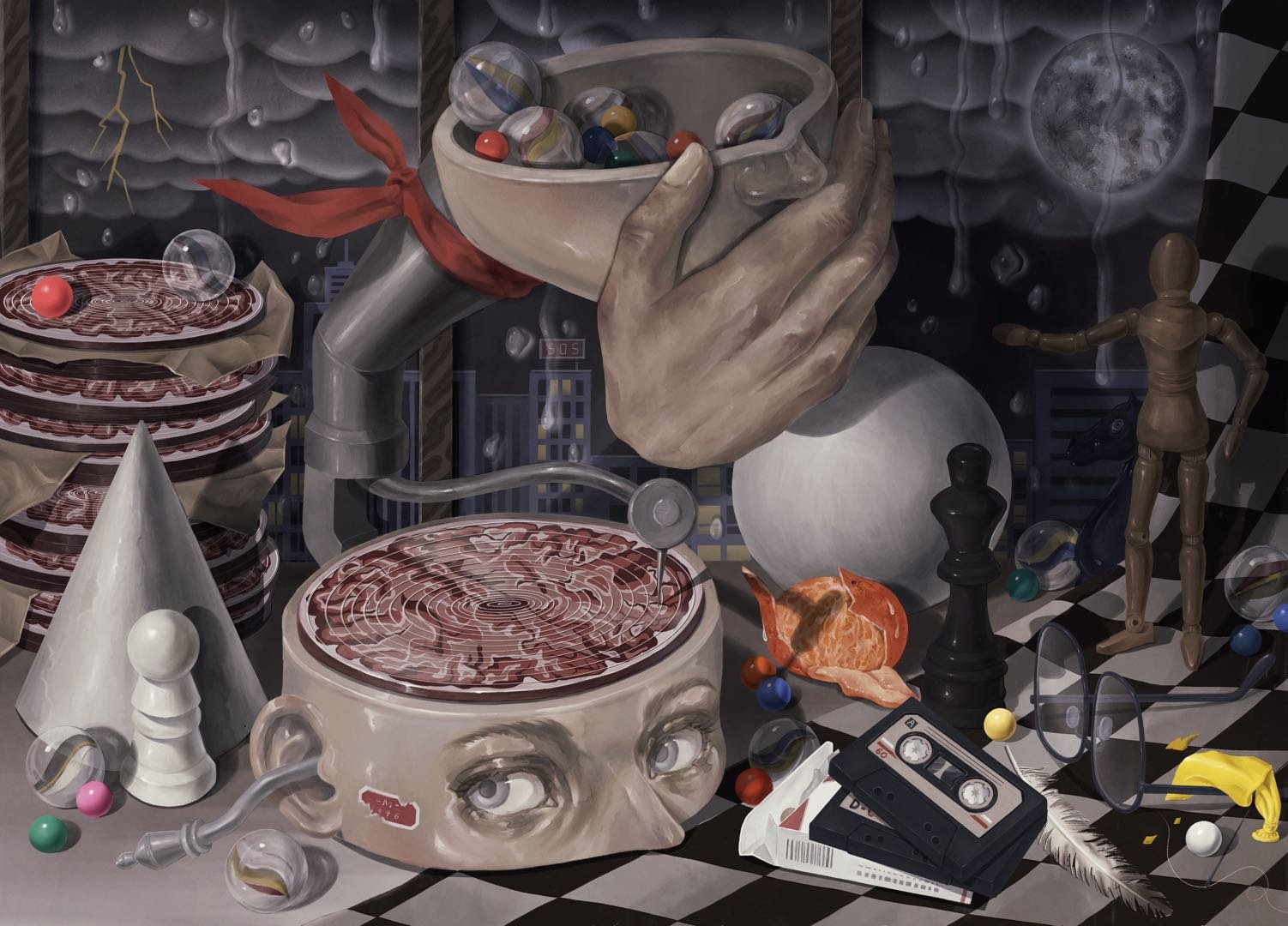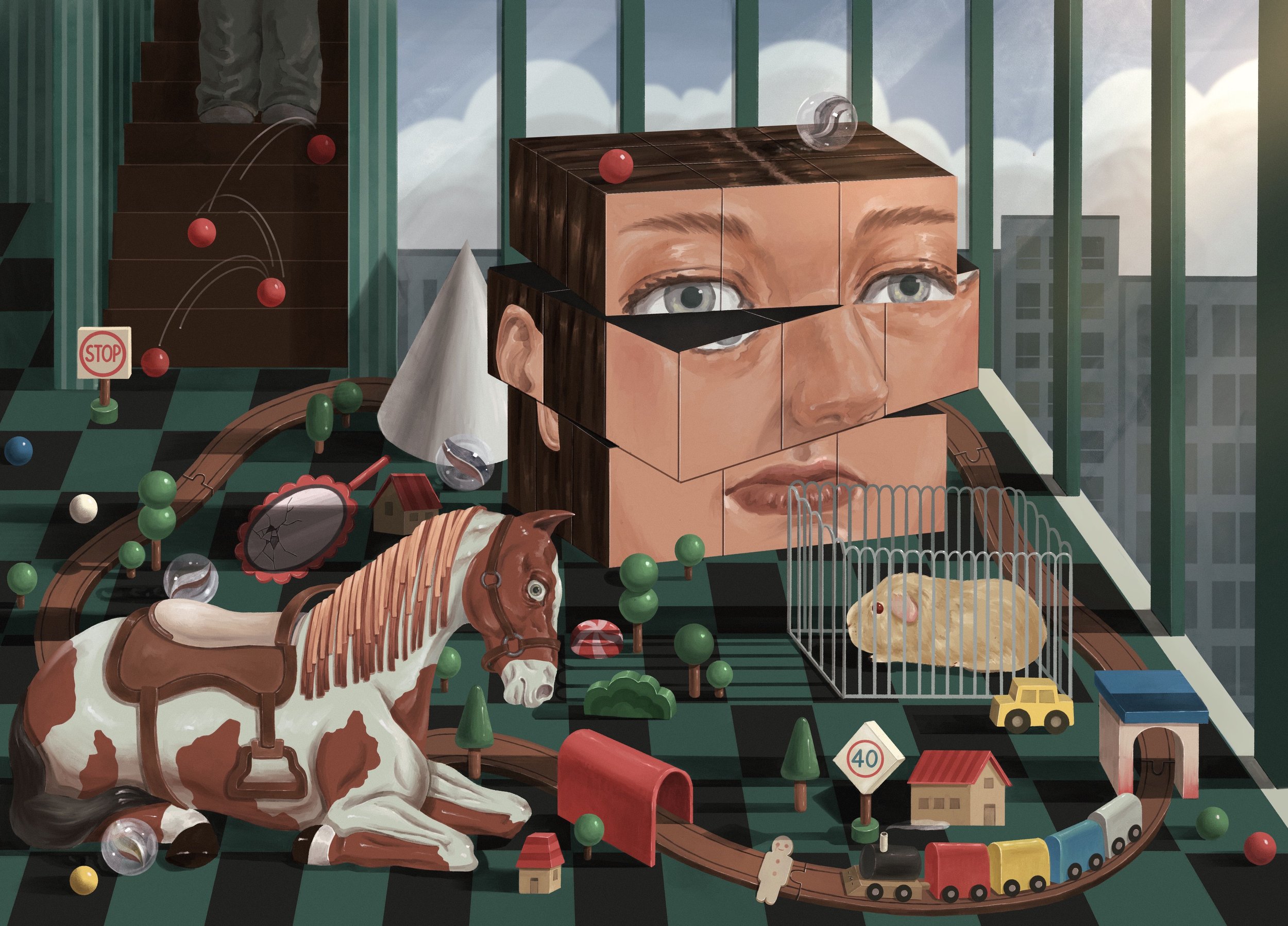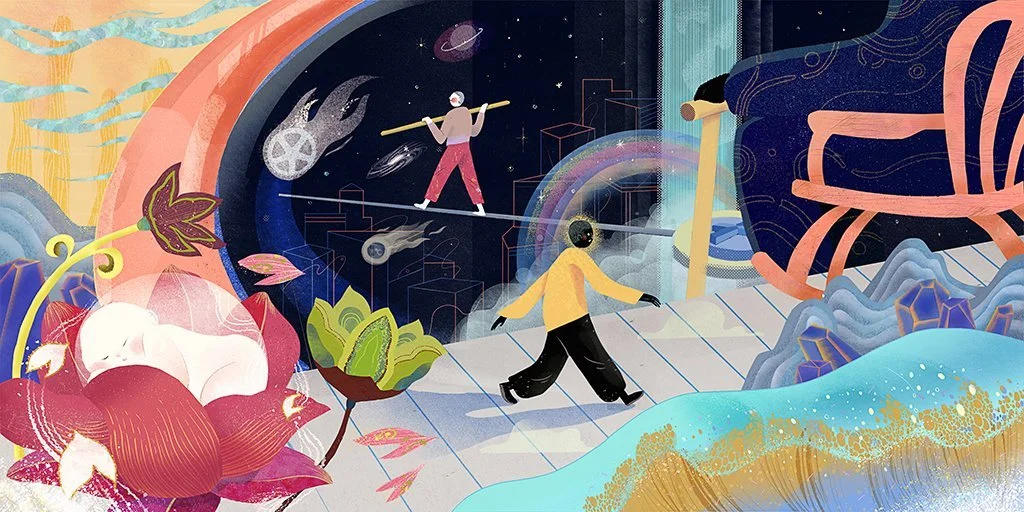INTERVIEW | Fangyu Ma
10 Questions with Fangyu Ma
Fangyu Ma is a Chinese illustrator designer. Most of her artworks are created digitally. She loves exploring different subject matters in her work. Her works are divided into two parts: decorative illustrations and narrative illustrations. In the decorative illustrations with the theme of still life, she uses bright and vibrant colors to make her works bring pure pleasure to the eyes. In her animal-themed self-creations, she tries to convey a strange, odd, sentimental mood. She uses animals as a medium and tries to use different angles to describe them, which challenges the traditional way of perceiving things. Besides, Illustration acts as a tool for her expression instead of speaking. In her thesis creation, Self-Portrait - The Room, she expresses in a metaphorical way the pain of sexual harassment from the children's experience, as a record and sharing of her personal experience, which she hopes will bring spiritual strength to the viewer.
Fangyu Ma - Portrait
INTERVIEW
Let's talk about yourself first. Why are you an artist, and how did you become one?
For the time being, I prefer to call myself a painter or an illustrator rather than an artist, as the latter feels like a weighty name. My first memory of drawing was when I was young, and my mother gave me an orange watercolor pencil and asked me to draw a ball of wool. My drawings were so densely packed that the paint overlapped and soaked through the paper. Nevertheless, I continued to paint and it became an integral part of my life.
I spent my early years with my grandparents in the countryside, where my grandfather was skilled at brush writing and Chinese ink painting, and my grandmother excelled at drawing birds and flowers with simple brush strokes. She even designed and sewed the patterns for my insoles. Drawing was a natural part of my life, and those were some of my happiest and carefree days.
As I grew up, I had to give up many of my hobbies for academic achievement, but painting persisted with me. It wasn't because I thought I could become an artist; it was simply the only thing that made me feel unique and different.
Fortunately, I was accepted into the architecture department of the Central Academy of Fine Arts, but the program's pressure made me feel suffocated once again. Painting became my escape, and I spent most of my free time on it. Eventually, I realized that it was what I wanted to pursue as my career.
Although I am fortunate to be a professional artist, I believe that I am still on the journey to becoming one. Perhaps one day, I will achieve that title, but for now, I am content with being a painter or illustrator.
Night Party, Digital, 10x12.5 inch, 2021 © Fangyu Ma
How would you define yourself as an artist? And how did this definition evolve over the years?
I would describe myself as patient, always seeking new possibilities, and level-headed. This quality or desire for self-improvement has remained constant throughout my life. I believe that it is particularly important to keep exploring and trying new things, especially during the student years. The process of self-discovery and developing a personal style can be arduous. It requires a significant investment of time and effort and may involve repeated setbacks and rejections. Yet, these challenges are all part of the process.
To succeed as an artist, one must be honest with oneself about one's limitations and failures. It takes courage to persist in the face of obstacles and years of apparent stagnation. This is the most important lesson that I have learned on my journey to becoming an artist. I believe that this mindset and approach define who I am as a person and shape my artistic vision.
Why did you choose illustration specifically over other mediums?
Illustration is a versatile and accessible art form. It can be created using a wide variety of materials and techniques. For instance, you can take your iPad and start drawing wherever you are. Not only does illustration convey emotions, but it is also a powerful tool for communicating messages and ideas. As someone who struggles with expressing myself through language, I feel fortunate to have discovered illustration as a means of self-expression.
Blue Rabbit, Digital, 15x15 inch, 2022 © Fangyu Ma
Connection, Digital, 15x15 inch, 2022 © Fangyu Ma
What messages are you trying to communicate with your art? And what do you think differentiates your approach from others?
My goal as an illustrator is to challenge people's perceptions and emotions. For instance, I have used flies as a theme in my work, glorifying these typically reviled creatures through my illustrations. This is where the freedom of illustration truly shines. Additionally, I aim to convey a sense of strangeness and sadness in my personal creations, touching on themes of powerlessness in the face of death while also celebrating the vitality of life.
I am particularly drawn to using metaphors in my work, especially when it comes to personal experiences. Real-life objects can be used to express abstract emotions in both my animated short films and my final projects. Rather than simply depicting the real world objectively, I prefer to use art to convey deeper meanings and emotions.
You divide your work into decorative illustrations and narrative illustrations; what are the main differences between these two types of work? And how does your approach change between the two?
In my view, decorative illustration is primarily concerned with visual aesthetics, while narrative illustration is used to express ideas and opinions. For instance, a still-life theme exercise is more suited to a decorative style, as it could be hung in a restaurant to enhance the ambiance. In such cases, bright and cheerful colors can be used to evoke a pleasant mood in the audience. Animal illustrations are also a favorite decorative theme of mine, with rabbits and flies being my personal favorites. I find these creatures evoke emotions of vulnerability and insignificance yet also represent a strong contrast with their remarkable reproductive abilities and vitality.
My graduation project represents my most significant attempt at narrative illustration. Although it does not have a clear storyline, it is an abstract retelling of real events that explore the self's memories and history. I have presented it in a silent manner, hoping that its message will resonate with the audience.
The phonograph, Digital, 14x20 inch, 2022 © Fangyu Ma
The Rubic’s Cube, Digital, 14x20 inch, 2022 © Fangyu Ma
You derive your work from personal experiences. How do you incorporate them into your illustrations? And do you have any other source of inspiration?
The creation of Self Portrait - The Room was the culmination of years of painting training, during which I learned how to express emotions through painting and visual language. This was the result of long and thoughtful practice rather than a sudden inspiration. My thinking and learning process can be summarized as follows: initially, I used abstract lines or colors to convey emotions, but found that it was difficult for others to understand the message without context. As illustration is my language, I wanted to convey a story that others could comprehend.
I then began to explore the use of figurative objects to express emotions. For example, I used a cactus to convey a sense of pain, fireworks to represent the release, and flowers to evoke warmth. I applied this approach to Self Portrait- The Room by using figurative objects to translate abstract emotions into tangible symbols. For instance, in the chessboard scene, the pieces represent passivity, while the glasses symbolize authority. The broken glasses represent the shattering of authority, and so on. In each work, human subjects are replaced by objects or toys, and subjectivity gives way to passivity and unconsciousness. This is what I wanted to convey most: although experiences are unique to individuals, human emotions are universal and can be expressed through illustration.
I believe in the power of illustration as a tool of expression, and my years of training and practice have helped me to use it to communicate my thoughts and feelings.
How has your art evolved over the years? And what inspired you to experiment?
I have many excellent illustrators that I admire and consider to be role models. However, during my learning process, I have realized that my growth path is unique and different from that of others. It is not enough to simply imagine ourselves becoming like our role models. Instead, we should be inspired by their works and experiences and learn from their attitude of perseverance and persistence. We should not limit our vision to our own works but rather strive to broaden our horizons and expand our creative potential.
What about NFTs and digital art? Are you incorporating this medium in your production as well?
While I have not currently incorporated NFTs or digital art in my production, I am hopeful that I will have the opportunity to do so in the future.
The Chessboard, Digital, 14x20 inch, 2022 © Fangyu Ma
Is there any project or series you have been meaning to produce but have yet to start?
I have recently made preparations to convert my digital artwork into traditional media by translating my previous electronic creations using traditional painting techniques. This process involves taking my digital artwork and recreating it using materials like paint, canvas, and brushes, in order to give it a new dimension and a different aesthetic quality.
By converting my digital artwork to traditional media, I hope to create a new dimension of my art and provide collectors with a unique and tangible piece that they can enjoy. This process is also a way for me to explore and experiment with different media and techniques, allowing me to grow as an artist and expand my skills.
And lastly, what are your plans for the future? Do you have any exhibition or collaboration you would like to share with our readers?
I am thrilled to announce that I have recently signed up with Bright Agency, and I am looking forward to collaborating with more clients and brands in the coming year.






















